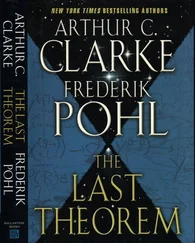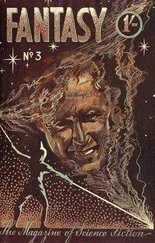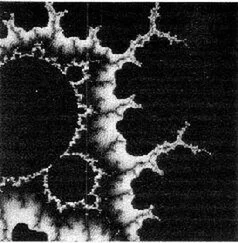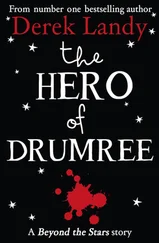"No one," said John Uskglass, quickly.
Another pig appeared, the very twin of Blakeman, and while the Charcoal Burner was exclaiming over his good fortune, John Uskglass got on his horse and rode away in a condition of the most complete mystification.
Shortly after that he returned to his capital city of Newcastle. In the next fifty or sixty years his lords and servants often reminded him of the excellent hunting to be had in Cumbria, but he was careful never to go there again until he was sure the Charcoal Burner was dead.
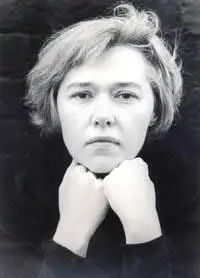
Susanna Clarke was born in Nottingham in 1959, the eldest daughter of a Methodist Minister. A nomadic childhood was spent in towns in Northern England and Scotland. She was educated at St Hilda's College, Oxford, and has worked in various areas of non-fiction publishing, including Gordon Fraser and Quarto. In 1990 she left London and went to Turin to teach English to stressed-out executives of the Fiat motor company. The following year she taught English in Bilbao.
She returned to England in 1992 and spent the rest of that year in County Durham, in a house that looked out over the North Sea. There she began working on her first novel, Jonathan Strange and Mr Norrell.
***

[1]Poor David Montefiore was entirely mortified to be discovered trespassing upon another gentleman's property and could scarcely apologise enough. He told Thomas Jefferson that they had heard so much of the beauty of Monticello that they had been entirely unable to resist coming to see it for themselves. This polite explanation went a good way towards pacifying the President (who was inclined to be angry). Unfortunately Tom Bright-wind immediately began to describe the many ways in which his own gardens were superior to Thomas Jefferson's. Thomas Jefferson promptly had them both turned off his property.
[2]Fairy princes do not often trouble to seek out other fairy princes, and on the rare occasions that they do meet, it is surprizing with what regularity one of them will die – suddenly, mysteriously, and in great pain.
[3]Fairies exceed even Christians and Jews in their enthusiasm for babies and young children, and think nothing of adding to their brood by stealing a pretty Christian child or two.
Yet in this, as in so many things, fairies rarely give much thought to the consequences of their actions. They procreate or steal other people's children, and twenty years later they are amazed to discover that they have a house full of grown men and women. The problem is how to provide for them all. Unlike the sons and daughters of Christians and Jews, fairy children do not live in confident expectation of one day inheriting all their parents' wealth, lands and power, since their parents are very unlikely ever to die.
It is a puzzle that few fairies manage to solve satisfactorily and it is unsurprizing that many of their children eventually rebel. For over seven centuries Tom Brightwind had been involved in a vicious and bloody war against his own firstborn son, a person called Prince Rialobran.
[4]4 The brugh was for countless centuries the common habitation of the fairy race. It is the original of all the fairy palaces one reads of in folktales. Indeed the tendency of Christian writers to glamorize the brugh seems to have increased with the centuries. It has been described as a "fairy palace of gold and crystal, in the heart of the hill" (Lady Wilde, Ancient Legends, Mystic Charms and Superstitions of Ireland , Ward & Downey, London, 1887). Another chronicler of fairy history wrote of "a steep-sided grassy hill, round as a pudding-basin… A small lake on its summit had a crystal floor, which served as a skylight." (Sylvia Townsend Warner, The Kingdoms of Elfin, Chatto & Windus, London, 1977).
The truth is that the brugh was a hole or series of interconnecting holes that was dug into a barrow, very like a rabbit's warren or badger's set. To paraphrase a writer of fanciful stories for children, this was not a comfortable hole, it was not even a dry, bare sandy hole; it was a nasty, dirty, wet hole.
Fairies, who are nothing if not resilient, were able to bear with equanimity the damp, the dark and the airlessness, but stolen Christian children brought to the brugh died, as often as not, of suffocation.
[5]In the late eighteenth century a journey from London to Nottinghamshire might be expected to take two or three days. Tom and David seem to have arrived after a couple of hours: this presumably is one of the advantages of choosing as your travelling companion a powerful fairy prince.
[6]Fairies born in the last eight centuries or so – sophisticated, literate and consorting all their lives with Christians – have no more difficulty than Christians themselves in distinguishing between the animate and the inanimate. But to members of older generations (such as Tom) the distinction is quite unintelligible.
Several magical theorists and commentators have noted that fairies who retain this old belief in the souls of stones, doors, trees, fire, clouds etc., are more adept at magic than the younger generation and their magic is generally much stronger.
The following incident clearly shews how, given the right circumstances, fairies come to regard perfectly ordinary objects with a strange awe. In 1697 an attempt was made to kill the Old Man of the White Tower, one of the lesser princes of Faerie. The would-be assassin was a fairy called Broc (he had stripes of black and white fur upon his face). Broc had been greatly impressed by what he had heard of a wonderful new weapon which Christians had invented to kill each other. Consequently he forsook all magical means of killing the Old Man of the White Tower (which had some chance of success) and purchased instead a pistol and some shot (which had none). Poor Broc made his attempt, was captured and the Old Man of the White Tower locked him up in a windowless stone room deep in the earth. In the next room the Old Man imprisoned the pistol, and in a third room the shot. Broc died some time around the beginning of the twentieth century (after three centuries without a bite to eat, a drop to drink or a sight of the sun, even fairies grow weaker). The pistol and the shot, on the other hand, are still there, still considered by the Old Man as equally culpable, still deserving punishment for their wickedness. Several other fairies who wished to kill the Old Man of the White Tower have begun by devising elaborate plans to steal the pistol and the shot, which have attained a strange significance in the minds of the Old Man's enemies. It is well known to fairies that metal, stone and wood have stubborn natures; the gun and shot were set upon killing the Old Man in 1697 and it is quite inconceivable to the fairy mind that they could have wavered in the intervening centuries. To the Old Man's enemies it is quite clear that one day the gun and the shot will achieve their purpose.
[7]Tom Brightwind was not the only member of his race who was passionately devoted to the memory of Julius Caesar. Many fairies claim descent from him and there was a medieval Christian legend that Oberon (the wholly fictitious king of the fairies) was Julius Caesar's son.
[8]Thomas Brightwind made me, the year of our Lord 1780.
[9]Despite Tom's low opinion of his offspring, some of his sons and daughters contrived to have quite successful careers without any help from him. A few years after the period of this tale, at more or less the same time, several scholarly gentlemen made a number of important discoveries about electricity. Among them was a shy, retiring sort of person who lived in the town of Dresden in Saxony. The name of this person was Prince Valentine Brightwind. Tom was most interested to learn that this person was his own son, born in 1511. Tom told Miriam Montefiore (David's wife), "This is the first instance that I recall of any of my children doing any thing in the least remarkable. Several of them have spent remarkably large amounts of money and some of them have waged wars against me for remarkably long periods of time, but that is all. I could not be more delighted or surprized. Several people have tried to persuade me that I remember him – but I do not."
Читать дальше





